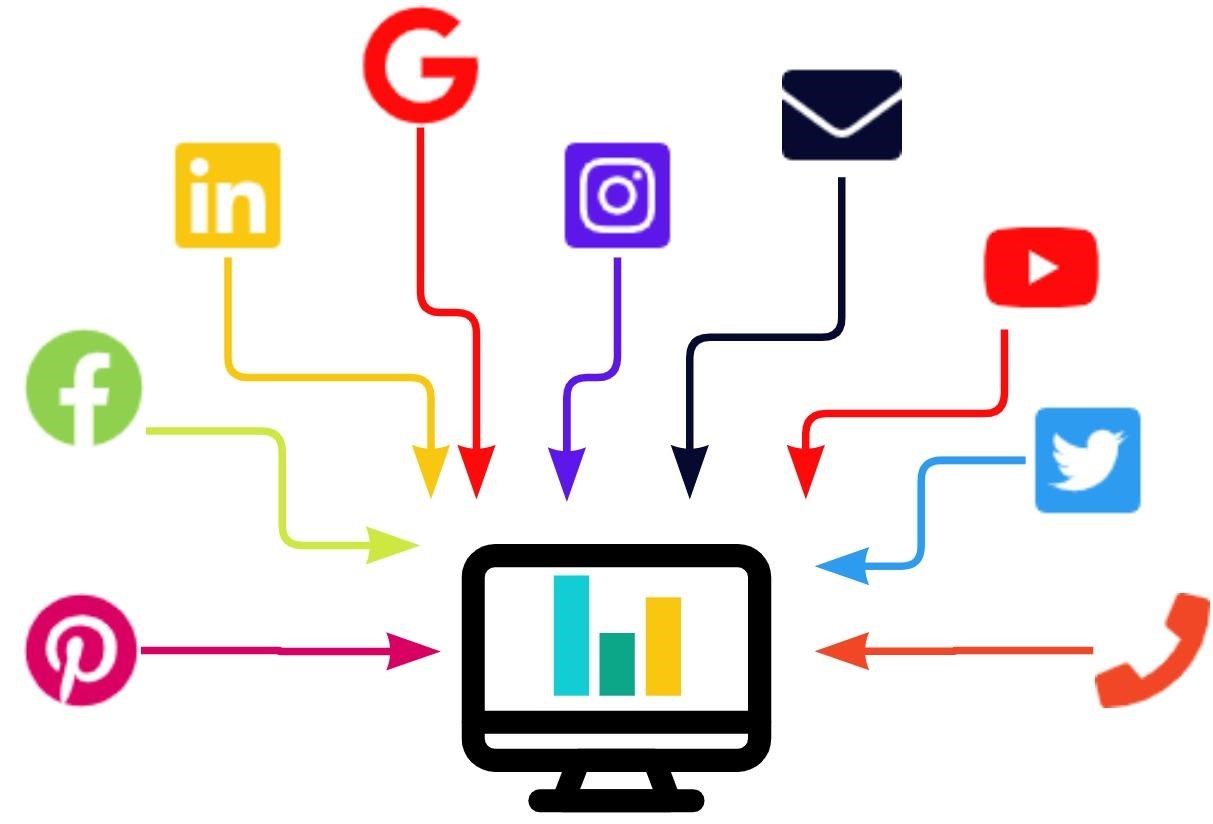Multi-touch Marketing Attribution: Current Status Quo and How to do it Right
A customer's journey spans several devices and touchpoints before resulting in a sale. In today's digital world, marketers are constantly looking for ways to optimize their campaigns and gain a competitive advantage. To do this, they need to identify touchpoints the customer came in contact with that resulted in a conversion. The marketers' goal is to understand where to allocate your marketing budget. A marketing team capable of gaining a clear understanding about the channels positively impacting customer journeys ending in conversions can more effectively allocate funds, gain valuable insights about the customer and optimize their experience.

Marketing attribution is the process of determining the value of each channel, campaign and piece of content by correctly assessing their contribution to an eventual conversion.
It’s a cornerstone of modern marketing analytics, but it can be difficult to get right. No matter what attribution modeling technique a company is intending to use, the number one thing they need to do in order to succeed with multi-touch attribution is collect as much data as possible. The more (relevant) data there is, the better the attribution model can (potentially get) at assigning credit to sources.
This isn’t just about collecting more data though — it’s also about the quality of the data. With accurate data collection methods in place and an effective modeling strategy implemented at every step along the way, multi-touch attribution becomes an invaluable tool for marketers looking for ways to improve upon their campaigns without wasting valuable time or money on things like poor targeting strategies or ineffective ad copyings.
Touchpoint versus attribution
To begin, it's important to understand the difference between touchpoints and attribution. Touchpoints are a single interaction with a customer, such as an email or call or website visit. Attribution is the process of assigning credit for a conversion to one or more touchpoints in the customer journey. Touchpoints don't always have equal value, so it's important to understand how each touchpoint contributes to your bottom line and choose which ones you want to measure closely.
76% of all marketers say they will have (in the next 12 months) the capability to use marketing attribution to optimize marketing campaigns and gain a competitive advantage¹
The accurate assessment of marketing performance has long been a priority in business. Marketing analytics and other technological innovations such as Big Data are revolutionizing opportunities for businesses to establish effective strategies with their target customers.² This piece’s objective is to present current methods of assigning credit to customer journeys’ touchpoints (aka marketing attribution) and to shed light on the disadvantages “traditional” methods have against new data driven methods.
Yet most businesses are still doing marketing attribution wrong³
So what's really going on?
A quick run-through the most used attribution models
 |
This method is likely the most common of the attribution models used by analytics tools. It assigns 0% of the conversion value to any other touchpoints in that sequence after it has been determined that one particular channel or medium caused the conversion. So if you have a FT model but also have email marketing campaigns set up, LT would give them zero credit for conversions even though they played an important part in it happening-this can lead to missed opportunities for marketers who want to optimize their campaigns based on performance metrics such as Cost Per Acquisition (CPA). |
|
|
This method assigns 100% of the conversion value to the first touchpoint in a sequence. So if someone lands on your website and then makes a purchase through an email campaign, FT would assign 100% of that sale's value to the initial website visit. |
|
|
This method gives equal value across every touchpoint in a sequence based on its time spent within a window before being converted; if all three channels are equally weighted at 33%, then each channel has 33% chance at being responsible for any given conversion-if one channel converts more often than another due only because longer time spent there during that window, then there's no way for marketers using this model. |
|
|
This method gives credit (40%) to the first and last touchpoints and the remaining 20% is distributed evenly among the middle touchpoints. |
|
W shaped and time decay Attribution models |
The W-shaped gives equally high credit to the middle, first and last touchpoints and low credit to the rest, whereas the time decay model gives the highest credit to the last-touch and decays linearly backwards from there. |
Summary of the current status quo
The most common attribution model is single-touch, which assigns 100% of the conversion value to one touchpoint in the customer journey. In other words, all of your marketing efforts are leading up to a single event --a signup form submitted or a checkout completed. This approach is problematic for two reasons. First, no one touchpoint in the customer journey leads to a conversion on its own. Rather, it is a series of interactions that ultimately lead to a conversion over time-and each interaction contributes an incremental amount toward that end goal. Second, single-touch attribution models don't capture all of those contributing factors or their relative importance (e.g., how many times did someone see an ad before they purchased something? What other channels were involved?).
Multi-touch attribution (MTA) allows marketers to better understand consumer behavior at each stage of their journey, thus enabling them to make informed decisions about which channels, campaigns and content are having the maximum impact on revenue generation.
For example: A customer clicks an ad in Google Search and then later clicks an ad banner on a publisher site before making their purchase; MTA would attribute 50% credit for this purchase back to both touchpoints because they happened within 30 days of one another.
Other commonly used multi-touch models (e.g. linear, U-shaped, W-shaped and time decay) are equally problematic because they rely on assumptions (like assuming every visitor who came from Twitter also saw an ad) rather than data.
What we have observed by interacting with out clients is that these models are leading companies to attribute conversions to the wrong channels and ignore other useful touchpoints that could help inform their strategy for future campaigns. The result? They end up spending more time and money on campaigns that aren't producing results because they're not looking at all possible points where customers interacted with them before reaching their goal page.
Why is Multi-touch Attribution so Hard?
In short, you have a lot more to take into consideration. With multi-touch you enter into realm of high dimensional data analysis, which becomes an exponentially harder problem to solve. And why does that matter? Because complexity increases, which translates into a lot harder, expensive, time consuming problem to extract valuable insights from, which is why it gets so muddy so fast.
Google analytics will only get you so far
Google Analytics may be the ubiquitous marketing analytics platform, but it falls short on expectations when it comes to attribution. First, it will present you with your run of the mill choices, while making it very hard and time consuming for users to abstract much value with the presets presented. Secondly, it is hard wired to analyze data from a fixed window of time (last 90 days), making it hard for longer sale cycles to use.
Marketing data is all over the place
For large businesses with large budgets, piping data together can get done though their internal data engineering teams, or by expensive 3rd party marketing automation tools. However, even tools like Marketo or Hubspot --which are often financially and technologically inaccessible to smaller businesses-- can help with this task, they lack native tracking for some of the most important conversion events, like live chats and phone calls.
Enter the world of advanced analytics and Artificial Intelligence (AI)
The real story behind multi-touch attribution lies in uncovering the relationship between interactions across different touchpoints over time. The good news is that by using advanced data mining techniques like Artificial Intelligence (AI) algorithms that can automatically identify multiple "touches" not evident to the human eye because the connections are usually not obvious and hidden in the data.
This new breed of methods open up the opportunity to fairly distribute the credit for conversions across all touchpoints in the customer journey. By doing so, you can make sure that no single marketing channel gets more credit than it deserves and also understand which stages in your funnel are working best for your business.
Benefits
- Allow you to see how much each channel contributed towards converting (or not converting) a customer, so that you can optimize your approach based on real data instead of guesswork. This lets you get ahead of trends in terms of messaging and timing, so that consumers always feel like they’re being reached out to at just the right time by someone who knows them well enough.
- They can reveal hidden insights into consumer behavior that can improve your business performance.
- They are a way for companies to identify the various stages of a customer’s journey, from first touch to final purchase. These models help you determine which channels are most effective in driving each stage of the funnel and what types of experiences result in the highest conversions.
- Continuously adapts channel attribution weights as the business transforms, without the need for a human to continuously review it.
Attribution models: what you see vs. what you need
Multi-touch attribution is a powerful tool, but it's not always clear how to use it. I've seen several companies make some common mistakes when they try to apply multi-touch attribution:
- When you look at the data, you'll see that each touchpoint seems like an equal contributor to your final conversion rate. This makes it easy to get caught up in a "victory across all channels" mentality that can leave you with a false sense of security-or worse, wasting money on ineffective campaigns because they seem more effective than they actually are.
- You might also be tempted just by looking at the numbers and saying something like "since Facebook had such a high check-out conversion rate on its own (4%), let's focus mostly there going forward." This may mean ignoring other channels that have higher overall value for your company-such as influencer marketing or word-of-mouth referrals from customers-and thus missing out on opportunities for growth through these channels' higher ROI potentials.
Conclusion
Multi-touch attribution models are becoming a pivotal tool on the digital marketing and marketing automation toolbox. They have the capability of uncovering hidden insights into consumer behavior and improve your business performance. By measuring the impact of each marketing touchpoint, you can determine which ones are most effective at driving sales, increase revenue and reduce costs. Using multi-touch attribution models can also help you uncover hidden insights into consumer behavior and improve your business performance.
Data-driven attribution models, such as the ones produced by AI methods that can grind through vast quantities of attribution data have the potential of making your marketing campaign budget perform up to its potential; while always watching for changes in customers and businesses habits and dynamics and fine tuning the attribution model to such changes.
In our next post, we’ll take a deeper look into first-party data strategies and how to leverage such information. So stay tuned!
References
¹ Econsultancy/Google, U.S., “The Customer Experience Is Written in Data”, 2017.
² Buhalis, D. and Volchek, K. (2021) ‘Bridging marketing theory and big data analytics: The taxonomy of marketing attribution’, International Journal of Information Management, 56, p. 102253.
³ Advertiser Perceptions/Google, U.S., Measurement Survey, 2017.
If you like this article, feel free to forward it to your colleagues or share it on social media. If you are an expert in the field and want to criticise or endorse the article or some of its parts, please leave a private note here or contact one of the authors.










